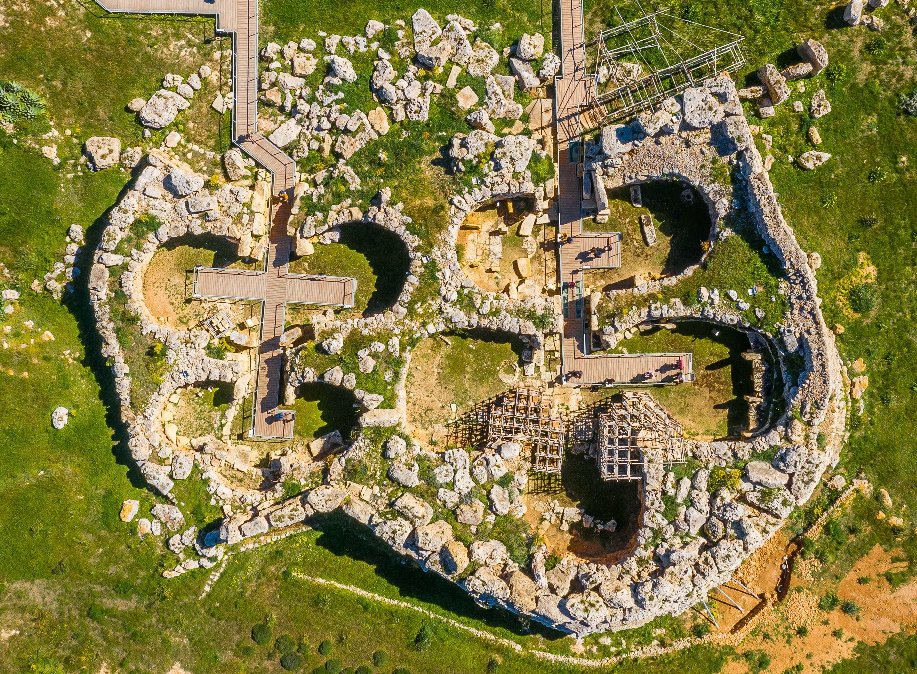Ggantija Double Temple On Malta Is Older Than Stonehenge And Great Pyramid Of Giza
A. Sutherland - AncientPages.com - Early Maltese temples were egg-shaped and resembled the womb of the goddess of fertility.
Later, from 4,000 to 3,000 BC, the Maltese built such temples with four or five semicircular projections off the temple's main room that served different religious purposes.
Down view of Ggantija Gozo. Image credit: Adobe Stock - Sandro
These shapes were intentionally created, giving an impression of the goddess' body. The Neolithic Maltese expressed their religious beliefs by creating many megalithic temple complexes like Ggantija, Mnajdra, Hagar Qim, and Tarxien.
The same prehistoric builders constructed the impressive Hal Saflieni Hypogeum, containing several levels and chambers.
Double Temple Is Dedicated To The Goddess Of Fertility
On Gozo, the second-largest Maltese island, there is a structure known as the Ggantija DoubleTemple. It dates back to around 3,000-3,600 BC and is dedicated to the goddess of fertility.
The Neolithic Maltese people built these gigantic megalithic structures of the hard Coralline Limestone and softer Globigerina Limestone found on the island. These limestone blocks weighed up to fifty tons.
The slabs weighing up to fifty tons give us an idea about the temple builders' incredible engineering and construction skills.
Temple of Ggantija. Image credit: Kritzolina - CC BY-SA 4.0
Ggantija (Ġgant - means' giant' in Maltese) double temple is an impressive structure. It is also known as the Twin Temple. A massive limestone block wall, which places us up to six meters high, encircles both temples.
Legendary Female Giant Sunsuna, The Builder
The ancient legend says that a female giant named "Sunsuna" built the temple walls. It took her only one day and one night, and she did it while nursing a baby. Another version of the legend suggests that "Sunsuna" carried the rocks on her head from a dolmen, Ta' Cenc, located on the south coast of Gozo Island.
The Great Sunsuna Goddess was worshiped as the center of the religion, considered very old and perhaps the oldest religion of humankind. Massive, elaborate temples were built in honor of this goddess.
The remains of these prehistoric structures are still dotting the fascinating landscape of Malta.
Temple of Ggantija. Image credit: BoneA - CC BY-SA 4.0
To build the Temple of Ggantija, the builders used several huge stone blocks. The doorway slabs have round holes that resemble offering holes found in the floors. Archaeologists discovered several stone spheres, suggesting that they may have been used for moving (perhaps manipulating or supporting) the huge megaliths.
Today, there are many theories about how the stone-age people could move gigantic megaliths with only primitive tools.
Ggantija Double Temple of Malta was where many different rituals took place in the main rooms' apses (curving spaces). Worshipers who honored death and regeneration used a lot of stone furniture. The people's customs, who created the temples and later disappeared around 2500 BC, are not well-known and remain obscure.
According to studies, the Temple people did not suffer from diseases, invasions, or lack of food. Still, one theory suggests that religious extremism and environmental conditions somehow caused the end of the religious traditions of these people.
The temple contained, for example, a significant ritual basin approx. one meter across and a pillar carved in low relief depicting a snake; there was also a shrine with three altar tables and a trapezoid-formed slab set on edge. The shrine held several limestone blocks decorated with spirals.
Ggantija Temple. Image credit: Hamelin de Guettelet - CC BY-SA 3.0
Now, there is evidence that the first people to inhabit Malta arrived 700 years earlier than history books indicate. Researchers analyzed ancient soils and DNA and could reveal that Malta’s first inhabitants came from different parts of the Mediterranean and Europe, including Africa.
Researchers also found that a second colonization arrived in 3850 BC from Sicily and lasted an extraordinary 1,500 years in Malta without a break.
However, in some periods of Malta's prehistory, “climate change fluctuations made Malta uninhabitable", according to Professor Caroline Malone, from the Queen's University Belfast have been working at one burial site in Malta since 1987. One of the team's discoveries was in the form of 220,000 bones, representing between 500 and 800 people dating from 3600-2350 BC.
As the settlers in Malta depended on climate change, "there was a substantial break of around 1,000 years between the first settlers and the next group who settled permanently on the Maltese islands and eventually built the megalithic temples."
Carbon dating determined that the Maltese temples were constructed around .3600 BC. Some evidence indicates that several underground temples, similar to that of Hypogeum, might have yet to be uncovered in Malta.
Written by – A. Sutherland - AncientPages.com Senior Staff Writer
Copyright © AncientPages.com All rights reserved. This material may not be published, broadcast, rewritten or redistributed in whole or part without the express written permission of AncientPages.com
Expand for referencesBetsy Ross-Edison, Seven Temples on Malta
Francis Aloisio, The Islands of Dream Speak
More From Ancient Pages
-
 Finds At Timna Valley Date Back To King Solomon-Era And Point To Sophisticated Ancient Society
Archaeology | Mar 3, 2017
Finds At Timna Valley Date Back To King Solomon-Era And Point To Sophisticated Ancient Society
Archaeology | Mar 3, 2017 -
 Ancient Mystery Of The Oghars – An Unusual And Little-Known Lost Race
Civilizations | Mar 19, 2019
Ancient Mystery Of The Oghars – An Unusual And Little-Known Lost Race
Civilizations | Mar 19, 2019 -
 Extraordinary Etruscan And Roman Treasure Trove Unearthed In San Casciano dei Bagni, Italy
Archaeology | Aug 12, 2022
Extraordinary Etruscan And Roman Treasure Trove Unearthed In San Casciano dei Bagni, Italy
Archaeology | Aug 12, 2022 -
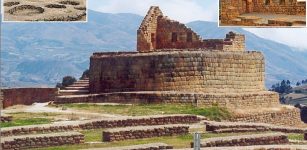 Ancient Ingapirca: Largest And Best Preserved Inca Ruins In Ecuador
Civilizations | Dec 9, 2016
Ancient Ingapirca: Largest And Best Preserved Inca Ruins In Ecuador
Civilizations | Dec 9, 2016 -
 The Aztec Sun Stone And Medusa Reveal An Intriguing Connection – A Different Gorgon And Strange Location – Part 2
Civilizations | Aug 1, 2018
The Aztec Sun Stone And Medusa Reveal An Intriguing Connection – A Different Gorgon And Strange Location – Part 2
Civilizations | Aug 1, 2018 -
 Pompey The Great: One Of Roman Empire’s Most Successful Military Commanders
Featured Stories | Jun 14, 2019
Pompey The Great: One Of Roman Empire’s Most Successful Military Commanders
Featured Stories | Jun 14, 2019 -
 Ancient Statue Of Makara, Legendary Sea-Creature Found In Cambodia
Archaeology | Jan 29, 2020
Ancient Statue Of Makara, Legendary Sea-Creature Found In Cambodia
Archaeology | Jan 29, 2020 -
 Cave Of The Stone Sepulcher – ‘Actun Tunichil Muknal’ And Its Dark History
Featured Stories | Mar 22, 2019
Cave Of The Stone Sepulcher – ‘Actun Tunichil Muknal’ And Its Dark History
Featured Stories | Mar 22, 2019 -
 Mysterious Sumerian Star Tablet And Strange Divine Omens – Sacred Knowledge Of The Gods – Part 1
Featured Stories | Feb 14, 2021
Mysterious Sumerian Star Tablet And Strange Divine Omens – Sacred Knowledge Of The Gods – Part 1
Featured Stories | Feb 14, 2021 -
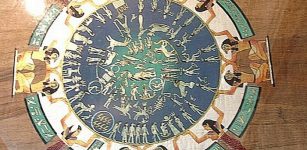 Ancient Papyrus Reveals Millennia Old Astronomical Secret: The ‘Demon Star’ Algol Does Exist
Civilizations | Aug 23, 2015
Ancient Papyrus Reveals Millennia Old Astronomical Secret: The ‘Demon Star’ Algol Does Exist
Civilizations | Aug 23, 2015 -
 Aztecs: Facts And History About The Ancient And Powerful Mesoamerican Civilization From Aztlán
Civilizations | Apr 10, 2017
Aztecs: Facts And History About The Ancient And Powerful Mesoamerican Civilization From Aztlán
Civilizations | Apr 10, 2017 -
 Glastonbury Tor – One Of The Most Mysterious Sacred Places In England
Civilizations | Aug 30, 2018
Glastonbury Tor – One Of The Most Mysterious Sacred Places In England
Civilizations | Aug 30, 2018 -
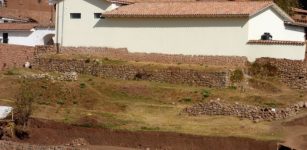 Impressive Inca Agricultural Terraces Discovered In Cusco, Peru
Archaeology | Jan 25, 2018
Impressive Inca Agricultural Terraces Discovered In Cusco, Peru
Archaeology | Jan 25, 2018 -
 Björketorp Runestone With An Engraved Curse Is Still Untouched In Blekinge, Sweden
Featured Stories | Mar 19, 2023
Björketorp Runestone With An Engraved Curse Is Still Untouched In Blekinge, Sweden
Featured Stories | Mar 19, 2023 -
 Owain Glyndwr: Famous Medieval Welsh Warrior Prince And Symbol Of Independence
Featured Stories | Jun 20, 2018
Owain Glyndwr: Famous Medieval Welsh Warrior Prince And Symbol Of Independence
Featured Stories | Jun 20, 2018 -
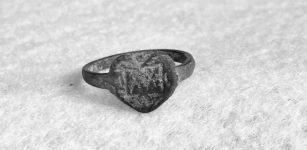 Unique Heart-Shaped Jesuit Ring At Fort St. Joseph In Michigan
Archaeology | Sep 17, 2022
Unique Heart-Shaped Jesuit Ring At Fort St. Joseph In Michigan
Archaeology | Sep 17, 2022 -
 Hypatia Of Alexandria – Brilliant, Controversial Scientist And Her Dramatic End
Featured Stories | Jan 7, 2019
Hypatia Of Alexandria – Brilliant, Controversial Scientist And Her Dramatic End
Featured Stories | Jan 7, 2019 -
 Ancient Graffiti On Sacred Mountain Reveals Secrets Of North Korea
Archaeology | Dec 3, 2021
Ancient Graffiti On Sacred Mountain Reveals Secrets Of North Korea
Archaeology | Dec 3, 2021 -
 New Light On Appearance Of Scythians In Northern Black Sea Region
Archaeology | Mar 11, 2017
New Light On Appearance Of Scythians In Northern Black Sea Region
Archaeology | Mar 11, 2017 -
 Ancient DNA Reveals A Diverse Community Lived At Machu Picchu, The ‘Lost City Of The Incas’
Archaeology | Jul 26, 2023
Ancient DNA Reveals A Diverse Community Lived At Machu Picchu, The ‘Lost City Of The Incas’
Archaeology | Jul 26, 2023

